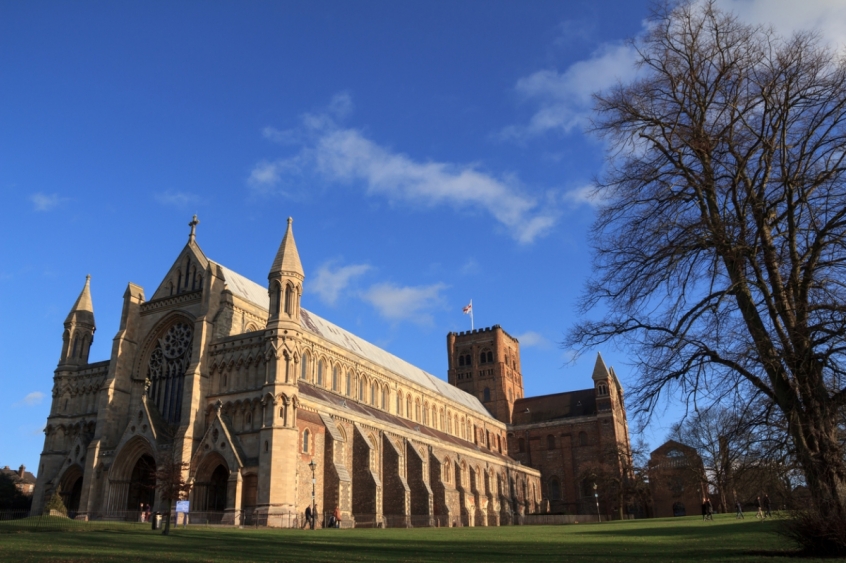
When Queen Victoria was on the throne and the American Civil War was raging, a Christian revival took place in an English town, north of London.
That revival has largely been forgotten, but could it hold any lessons for today's believers, seeking to attract people to the gospel?
Reports say the revival took place in St Albans, a town in Hertfordshire, between 1861 and 1865. St Albans – now a city – is probably best known for being the site of one of the most important events in British religious history – the execution of Saint Alban, the country's first Christian martyr around 1,700 years ago.
As a result, St Albans has been a place of pilgrimage for believers for centuries, and today its famous Cathedral is a major centre of worship and community.
A research paper has shown that during the 'St Albans revival,' up to a fifth of the population attended lively Christian gatherings in buildings, in tents, in the open air – on a field nicknamed 'Revival Meadow' – and later in purpose-built iron and wooden structures.
The events of those tumultuous years were recorded in the local press, as prominent speakers of the time came to St Albans from across the UK, Europe, Scandinavia, and South Africa. A total of 95 speakers from a range of Protestant denominations spoke at the meetings.
The research reports local newspaper, the St Albans Times commenting that the speakers had "fully, faithfully, prayerfully and affectionately preached the gospel in our town hall, in the corn exchange, in the tent, and the open-air to scores, who either from prejudice or want of reflection, habitually neglect the House of God."
The newspaper also reported, "We were greatly pleased to see a large number of the working classes present, who appeared to listen with devout attention. The effect of these meetings must be to awaken many to the importance of attending divine worship on the sabbath."
Up to 1,500 people attended the regular meetings, including many of the labourers building a new railway line to link St Albans with London. A Christian minister arranged special meals for the workers.
The 1861 census recorded St Albans' population as just 7,652 – so the revival had a major impact on the town's people.
How did it happen? The paper presented in 1982 by evangelical minister Dr Geoffrey Stonier to the Oxford Association for Research in Revival highlighted some factors.
For example, church leaders and others had met together regularly to pray for revival over many years, and there was close co-operation between all the town's Protestant denominations, including the Church of England.
Dr Stonier comments that unity of approach and commitment to work together, were "a major factor in the work of the revival."
Support came from leading figures involved in revival in other parts of the country, including the nearby town of Barnet, and the revival had financial backers.
Dr Stonier, a Hertfordshire-based theologian and ordained minister, who was pastor of five churches over more than 40 years,commented: "There were no super-Christians at St Albans. There were just ordinary, humble, hardworking, faithful believers, who were the backbone of their local churches."
Sadly, there is no research into the revival's longer-term impact, and only some hard copies of Dr Stonier's 1982 paper remain. The Oxford Association for Research in Revival, formed in 1974 through the work of the Belfast-born revival historian J. Edwin Orr, appears to have been wound up.
I could find no supporting web-based research and Dr Stonier explains his study did not "take into account the impact it made upon social problems such as crime, poverty, drunkenness, immorality and prostitution".
Today, although several St Albans churches mention the revival on their websites – and some can trace their development back to it – the 'St Albans Revival' has largely been lost to history.
Dr Stonier himself admitted the difficulties he faced, as he looked back on events that took place 130 years before his research.
He wrote in 1982: "I experienced some severe problems concerning the St Albans Revival. It has been little documented, and no one in St Albans has heard a whisper of it, not least the churches which not only supported the revival but benefitted most from it."
He did, however, track down a man whose grandfather had been involved in the revival.
But despite the lack of full information, maybe there are still lessons from the 'forgotten revival' – around sustained prayer, co-operation, flexibility, and resourcing – that can help Christians today seeking a new movement of God in their cities.
Rev Peter Crumpler is a Church of England minister in St Albans, Hertfordshire, UK, and a former communications director for the CofE.













